Behind The Scenes At Westcon's Cisco UCS LEAP Center
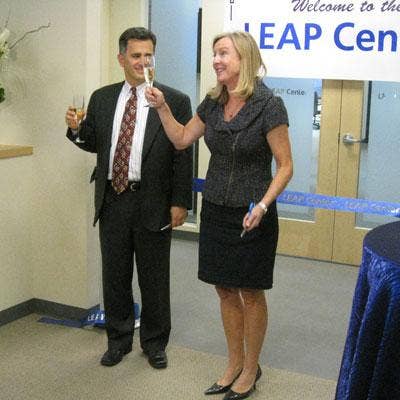
LEAP Before You Look (At UCS)
Westcon Group's new LEAP Center provides IT solution providers the opportunity to get hands-on training and accreditation with Cisco's UCS platform, and lets them bring customers in to see how UCS might work in their own data center environments.
"LEAP" is an acronym for Learn, Educate, Architect, and Plan, which describes the Center's primary functions, said George Fandos, vice president for the global data center business of Comstor, the group within Westcon focused primarily on Cisco distribution.
Fandos and Julie Hens, vice president of Cisco's Worldwide Partner Organization, officially cut the ribbon to the LEAP Center after a day of presentation on virtualization, cloud, and other trends.
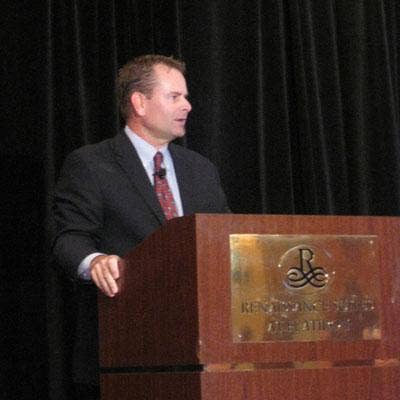
Building A Partnership With Cisco
Andy Banks, Comstor's vice president for North America Cisco sales, said his organization is the first worldwide distributor for Cisco's UCS, and that the new Denver-based LEAP Center was opened just a couple of weeks after a similar facility was opened in Brussels, Belgium.
Between 90 percent and 95 percent of Comstor's business comes from selling Cisco products, a business that works because of a focus on helping solution providers develop Cisco solutions and not just shipping products, Banks said.
"It's not about pick-pack-ship," he said. "It's about partnership."

Add Value To The Sale Before Someone Else Does
Geoff Fancher, vice president of Cisco's U.S. Field Partner Organization, said changes in the business environment over the last few years have forced customers to focus on the ROI of everything they do. And that, in turn, forces solution providers to add value to every deal they make with customers, he said.
"If you are not adding value, you are probably not making the sale," he said. "And if you don't make the sale, someone else will."
Cisco's wide range of products targeting networking, collaboration, data center architecture, and even small business infrastructure is not enough to close a deal, Fancher said.
"Guess what. We don't have the total solution," he said. "You provide the total solution."
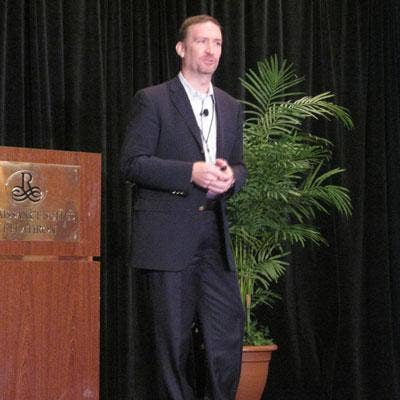
Rebuilding The Data Center With UCS
Cisco's UCS architecture, which ties Cisco's blade server and networking technology closely in an integrated product offering for virtualized data center environments, is a far cry from what Paul Werner, director of operations sales at Cisco, called today's "bolt-on fixes to accidental infrastructure."
Citing IDC figures, Werner said about 70 percent of data center budgets goes to maintenance and operations. He also said that administrative overhead rises as data center environments become increasingly virtualized.
Cisco UCS cuts through these issues by collapsing Fibre Channel and IP networks into a single network, embedding management in the blade servers, quadrupling the memory of its servers to improve performance in virtual environments, and using virtualized interface cards, Werner said.
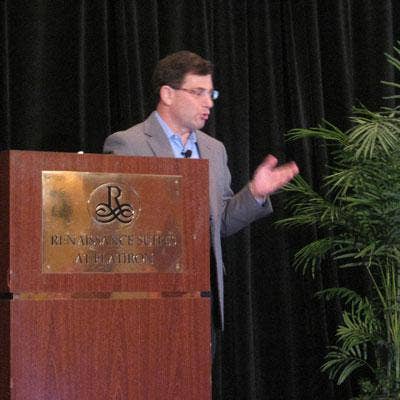
Getting Past 'Virtualization Stall' And To The Cloud
The ease at which IT people can create virtual servers means that entire departments can become virtualized before a company has thought about how to scale it to the enterprise, said Steve Kaplan, vice president of data center virtualization at INX, a Houston-based solution provider.
This leads to problems with virtual machine sprawl, I/O bottlenecks, and storage and networking performance issues. "We need to turn this situation on its head, and look at the environment from a virtualization point of view, and treat the physical parts as extras," Kaplan said.
Focusing on the ROI (return on investment) and financial payback of virtualized environments requires moving customer focus away from their physical infrastructures, especially as they begin to look at the benefits of cloud computing compared to their existing architectures, Kaplan said.
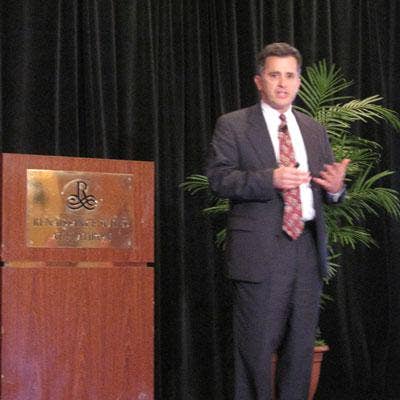
Westcon's Cisco UCS Training And Demo Center
Comstor's Fandos said that the new LEAP Center is more than a demo lab. It includes a fully-stocked classroom, a Cisco TelePresence video conferencing system for distance learning, a full-time engineering staff, a 24x7 support infrastructure, and a complete library of demos and applications, he said.
The LEAP Center also includes a variety of equipment from related vendors. This includes storage arrays from Cisco UCS supporters EMC and NetApp, as well as servers from rivals IBM and Hewlett-Packard, Fandos said.
"A lot of people think if you move to Cisco, you have to be Cisco-only," he said. "Not true. Maybe someday customers will be Cisco-only. But it works well in HP and IBM environments."

Necessity: The Mother Of Inventions And Demo/Training Labs
Bill Hurley, Westcon executive vice president and CTO, said the LEAP Center stemmed from the need to redesign its own data center, which in 2008 was expected to cost $5 million.
This was at the time that Cisco first unveiled its UCS, which Hurley said seemed to fit the need for a virtualized data center environment. Hurley sent a group of skeptical engineers to see UCS. "They prepared a 36-page document of questions," Hurley said. "My engineers never even write 36 words."
However, the engineers liked what they saw and by 2009 Westcon was one of the first implementations of UCS, Hurley said. Implementation was fairly easy, with the porting of Oracle RAQ to a virtualized environment the biggest challenge. Westcon is currently moving to DB2. (DB2 is happy to be virtualized for UCS," he said.
{C}
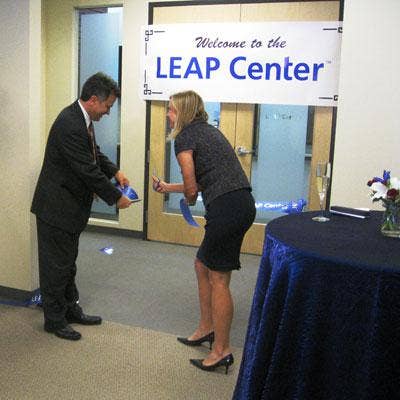
Cutting The Ribbon On The LEAP Center
Comstor's Fandos (left) and Cisco's Hens (right) officially cut the ribbon to Westcon's LEAP Center.
Cisco provided about $2.3 million worth of equipment as part of its investment in the LEAP Center, an investment which Hens said is really about maximizing partner opportunities.
"We're all resource-constrained," she said. "I'd like to see partners work with this center and not invest in their own. This frees their own resources to let them focus on their sales while leveraging their distributor."
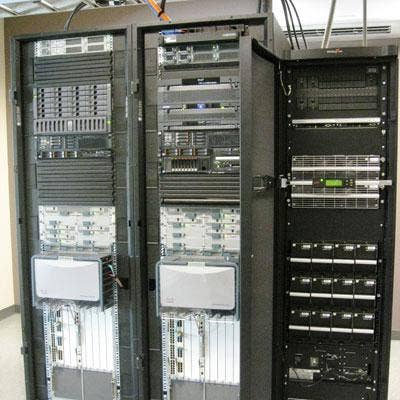
The Star Of The LEAP Center: Cisco UCS
After the cutting of the ribbon, solution providers were invited to see the Cisco UCS system deployed at Westcon for demonstration.
The system includes Cisco's blade servers and its Nexus networking switches, along with EMC and NetApp storage.
Also included are servers from HP and IBM, which Westcon threw in order to show UCS in a multivendor environment and to introduce tools partners can use to migrate customers from existing server platforms.
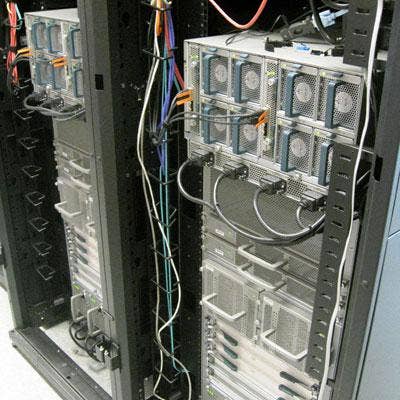
Look, Ma, No Cables!
The level of integration that is built into UCS is evident when walking around to the back side and seeing just how few cables are actually used.
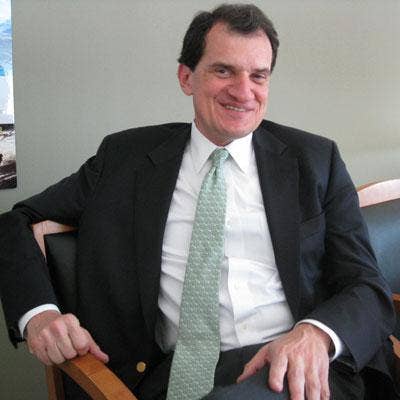
Showing Partners To The Cloud By Example: Westcon
The LEAP Center and Westcon's own adoption of Cisco UCS makes it possible for Westcon to demonstrate virtualization and cloud computing, said Dean Douglas, president and CEO of the distributor.
"If we did have that opportunity to play with UCS, we wouldn't have gone with it," Douglas said. "We realize that it's important for resellers to touch and feel it if they want to work with it."
That idea of adopting leading edge technology as a way of helping solution providers understand it is carried out in other parts of Westcon. Douglas said that Westcon decided to build on its virtualized environment by implementing Microsoft's BPOS (Business Productivity Online Suite) of cloud-based applications and Microsoft's virtual desktop infrastructure.
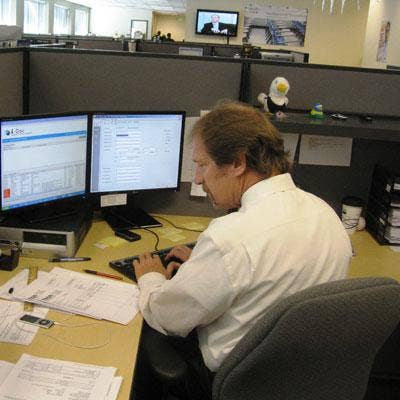
Hands-On Experience Makes Easier Sales
Westcon has implemented Microsoft's BPOS cloud applications and Microsoft's virtual desktop infrastructure (VDI) throughout its own operations, Douglas said.
Westcon employees, such as Bob Bussard, a Comstor sales support rep (photo), use the technologies daily either at the office or on the road. That includes Douglas himself. "My laptop is working on BPOS," he said. "I use it for Exchange and other Microsoft applications. Our implementation is global."
Playing with such technologies is important for solution providers to get the experience they need to be confident enough to take it to customers, Douglas said.
"This will help shorten their sales cycles," he said. "It's easier to take technology to decision makers when you can make it more compelling for them. If you know the value, it's easier to explain the value."